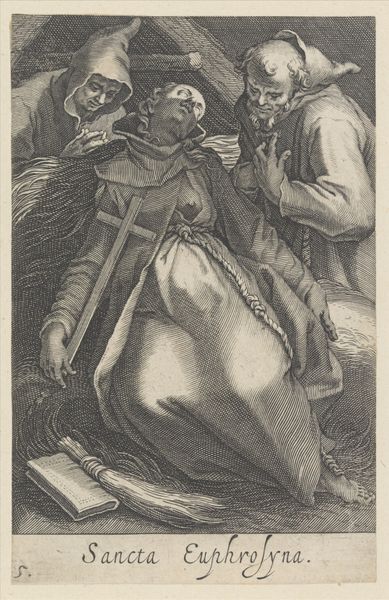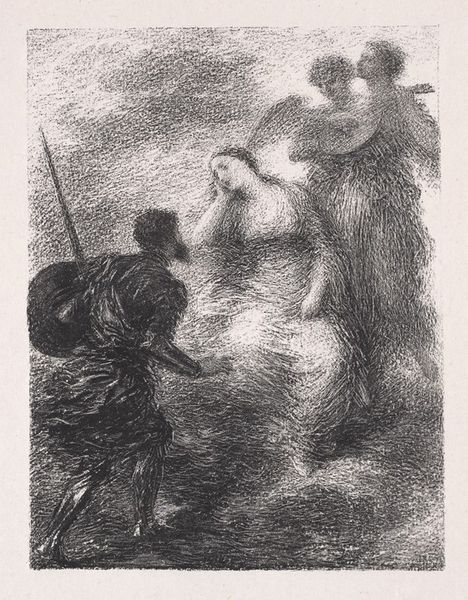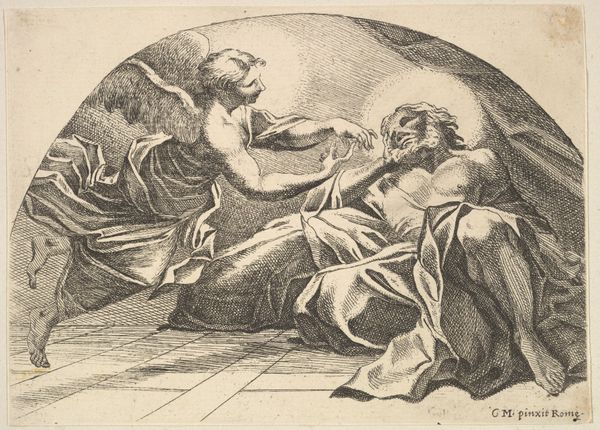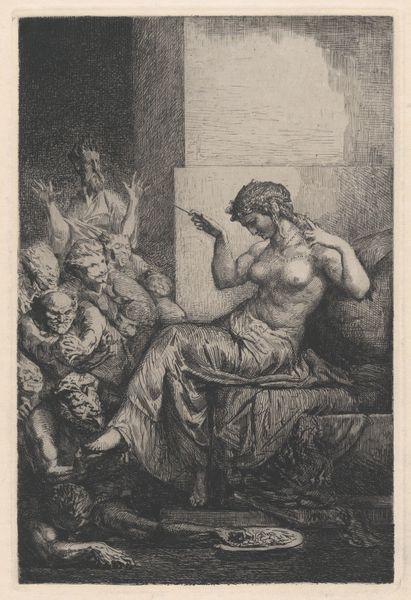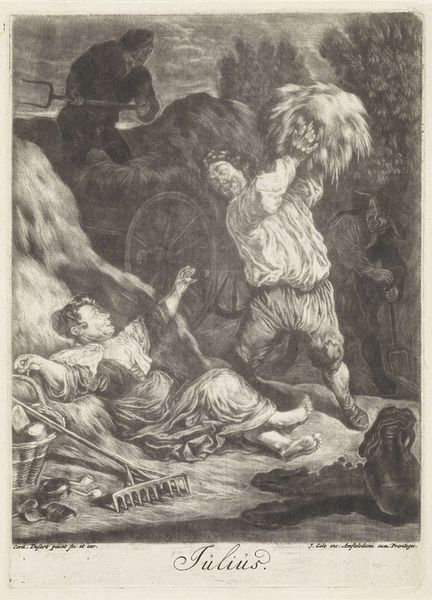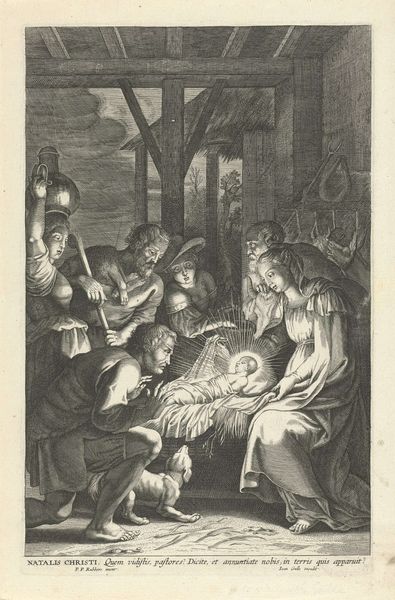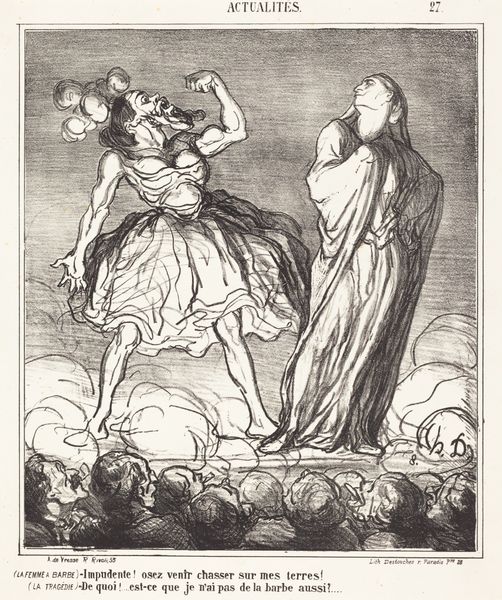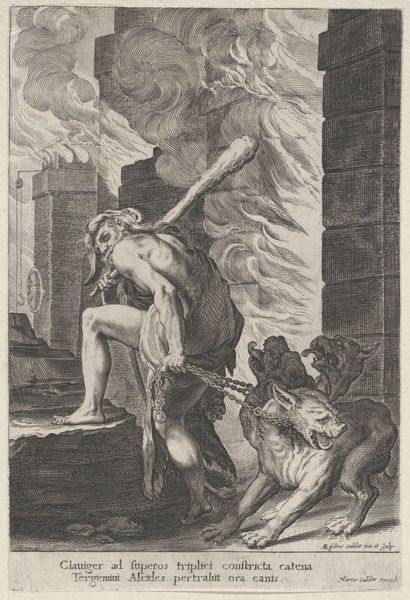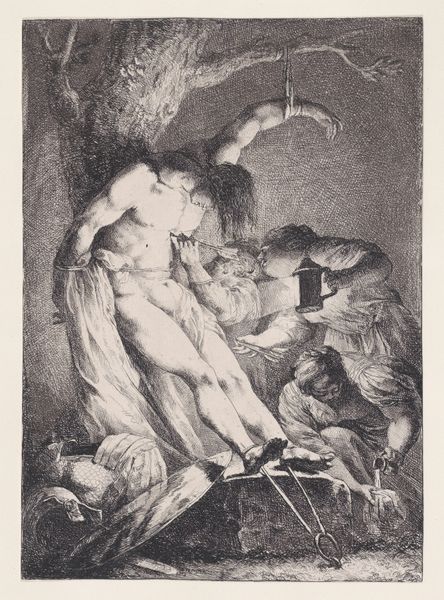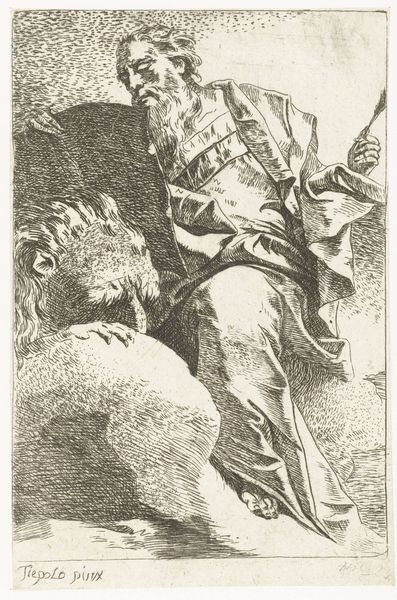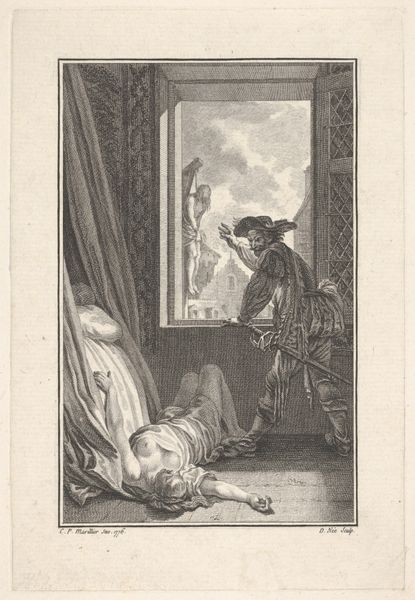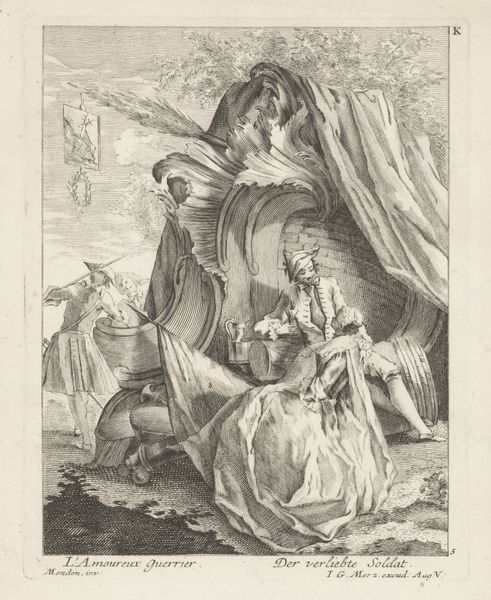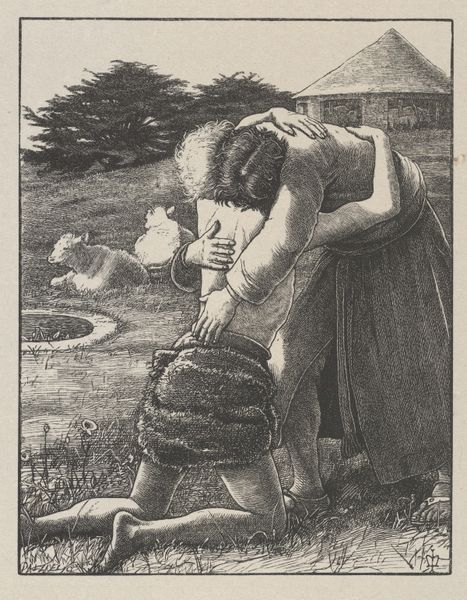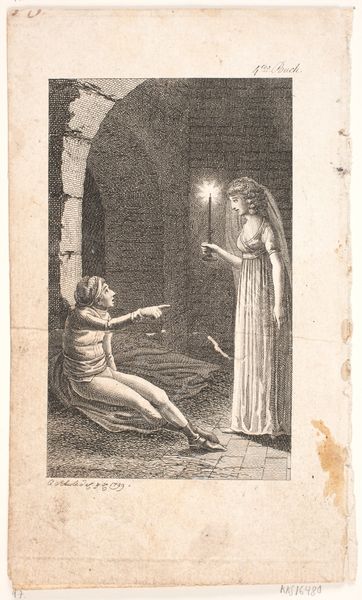
The Rich Man and Lazarus (The Parables of Our Lord and Saviour Jesus Christ) 1864
0:00
0:00
drawing, print, engraving
#
drawing
#
medieval
#
narrative-art
#
animal
# print
#
dog
#
landscape
#
figuration
#
men
#
genre-painting
#
history-painting
#
engraving
Dimensions: image: 5 1/2 x 4 5/16 in. (13.9 x 10.9 cm) sheet: 7 5/16 x 6 1/16 in. (18.6 x 15.4 cm)
Copyright: Public Domain
Curator: This is an engraving created by Dalziel Brothers in 1864, after a drawing by Sir John Everett Millais. The piece, titled "The Rich Man and Lazarus," depicts a scene from one of Jesus Christ's parables. Editor: The contrast hits you immediately, doesn’t it? Stark light and shadow, dividing two very different worlds. There's a weightiness to the lower scene, a kind of desperation mirrored by the lounging and begging dogs. Curator: Absolutely. Millais uses the imagery of dogs to evoke the desperate situation Lazarus is in and to play on established symbolism from earlier works throughout art history. Editor: Dogs acting as a symbol of faithfulness, of companionship, but also of being outcast. It feels timeless. Curator: It's interesting that you pick up on that, and it reminds me how this narrative continues to echo throughout history. We see it pop up time and time again through morality tales of inequity and imbalanced wealth. Note how Millais sets the scene by contrasting an oblivious opulent party above against Lazarus who is, neglected. Editor: Yes, there's almost a stage-like quality to it. Those in the upper scene, dining and dressed in elaborate garb are cut off from Lazarus who resides on the cold hard ground below with dogs, whose faces bear their own form of suffering. One even seems to snarl slightly. Curator: Dalziel’s engraving after Millais highlights the social commentary, emphasizing the division and detachment of classes during the 19th century. Millais produced these religious artworks in the midst of political turmoil and change across England. Editor: I wonder, looking at it now, how such stark symbols affected the audience it was designed for? Was it too moralizing, too blunt? Or was it a poignant and necessary reminder? The enduring relevance of such narratives makes you pause, doesn't it? Curator: It’s hard not to pause and examine the piece, but also, to turn and examine our world, the power of imagery like this to shape opinion, even culture. Editor: Exactly. The emotional and visual cues present are stark—suffering, neglect, plenty. Food for thought indeed.
Comments
No comments
Be the first to comment and join the conversation on the ultimate creative platform.
